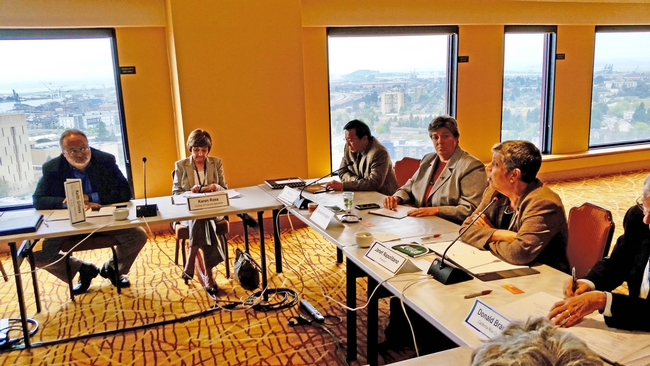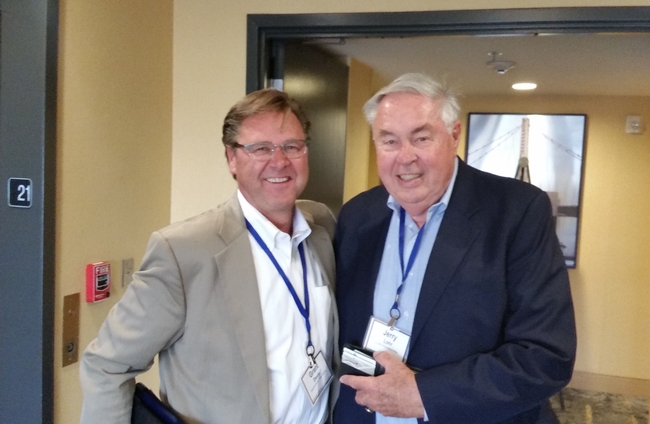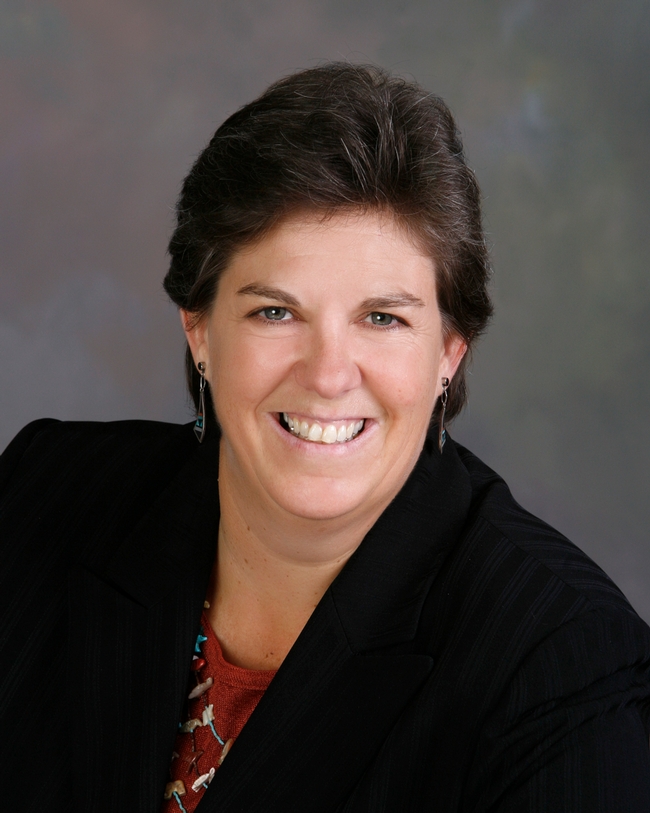Posts Tagged: President Napolitano
Advisory committee examines UC ANR structure, funding
As part of the University of California Office of the President restructuring effort, President Napolitano appointed an advisory committee to determine a set of recommendations regarding UC ANR. The committee has been asked to explore structural, funding and associated governance options that will best support UC ANR and the University of California.
The committee is chaired by David Marshall, UC Santa Barbara executive vice chancellor, and consists of UC chancellors and deans, as well as representatives of the UC Board of Regents, UC Academic Senate, UC President's Advisory Commission on ANR, and the Executive President's Advisory Group.
The advisory committee has met a few times and has received background materials on UC ANR, said VP Glenda Humiston. Future meetings will delve into how UC ANR allocates funds and prioritizes program delivery. The advisory committee will begin interviewing UC ANR stakeholders in the next few weeks.
The advisory committee's goal is to bring final recommendations to the president and UC Board of Regents before the end of the year.
PAC discusses strategic plan and urban agriculture
Downtown Oakland was the site of the biannual UC President's Advisory Commission on Agriculture and Natural Resources (PAC) meeting on Aug. 9, which included a Q&A session with President Napolitano, program presentations from UC Cooperative Extension county directors Rob Bennaton and Igor Lacan, and updates from deans Helene Dillard (UC Davis), Keith Gilless (UC Berkeley) and Kathryn Uhrich (UC Riverside), as well as Executive Associate Dean John Pascoe (filling in for Dean Michael Lairmore, UC Davis School of Veterinary Medicine).
In her opening remarks, UC ANR Vice President Glenda Humiston introduced Mark Bell, the division's new vice provost for statewide programs and strategic initiatives. Bell spoke about the strength of the UC system, the diversity of programs offered by UC ANR statewide, and his plans to leverage the strong volunteer and staff base of programs like UC Master Gardeners and 4-H.
Humiston also offered updates on the division's strategic plan and the significant progress made in implementing its key goals. Associate Vice President Tu Tran then gave a presentation on the division's financial situation, which he titled “A Fiscal Plan for Success.” Tran addressed UC ANR's place in the state budget and its revenue projections through FY 2021-22, which includes significant growth in major gifts and fundraising.
Bennaton and Lacan both gave spirited and enthusiastic presentations that were received well. Bennaton, who serves as county director for Alameda and Contra Costa counties as well as UCCE urban agriculture advisor for the Bay Area, discussed the benefits of urban agriculture and the assortment of activities going on in community development, habitat restoration and youth programming.
Lacan, also a UCCE environmental horticulture advisor for the Bay Area and co-director in San Mateo and San Francisco counties, talked about the diverse and richly rewarding work he spearheads in urban forestry. His work currently focuses on sustainable management of urban trees and urban water.
During a Q&A period, the president engaged PAC members on various issues such as potential public-private partnerships that could involve UC ANR, targeted approaches to advocacy and deferred maintenance needs for UC writ large but also for UC ANR and its research and extension centers system, specifically.
The deans gave updates on research and activities occurring at their respective colleges and school.
The next PAC meeting is scheduled for December, also in Oakland.
President Napolitano requests a draft of ANR’s five-year strategic plan by Oct. 31
Colleagues,
Recently I had the opportunity to meet with President Napolitano to review accomplishments and goals for ANR. Following a very upbeat and encouraging conversation, the president requested that ANR's leadership complete a more detailed five-year strategic plan. The draft is due at the end of October, with the final document due in December.
While this is a timely and useful exercise for the division, it comes with a very challenging timeline. The 2025 Strategic Vision will guide our work, and where strategic plans already exist within the statewide programs, strategic initiatives, Research and Extension Centers, budget plans, etc., we will draw from these plans.
Because of the timeline, it is not possible to conduct the extensive input and feedback processes that were used in creating the 2025 Strategic Vision. However, strategic plans, by nature, are dynamic documents. The intent is to position ANR to achieve the goals laid out in the 2025 Strategic Vision and address strengths, weaknesses and gaps in attaining those goals. The draft that is shared with the president will undergo a vetting process with ANR advisory groups and committees.
The primary planning group will be the Senior Leadership Team. However, other individuals have been invited to participate so that both programs and administrative units are well-represented.
We'll share the final document with you when we've delivered it to the president's office. If you have comments or suggestions for this process, please submit them to me using this link http://ucanr.edu/5yearplancomments.
Best regards,
Glenda Humiston
Vice President



